Dogs in Wilderness
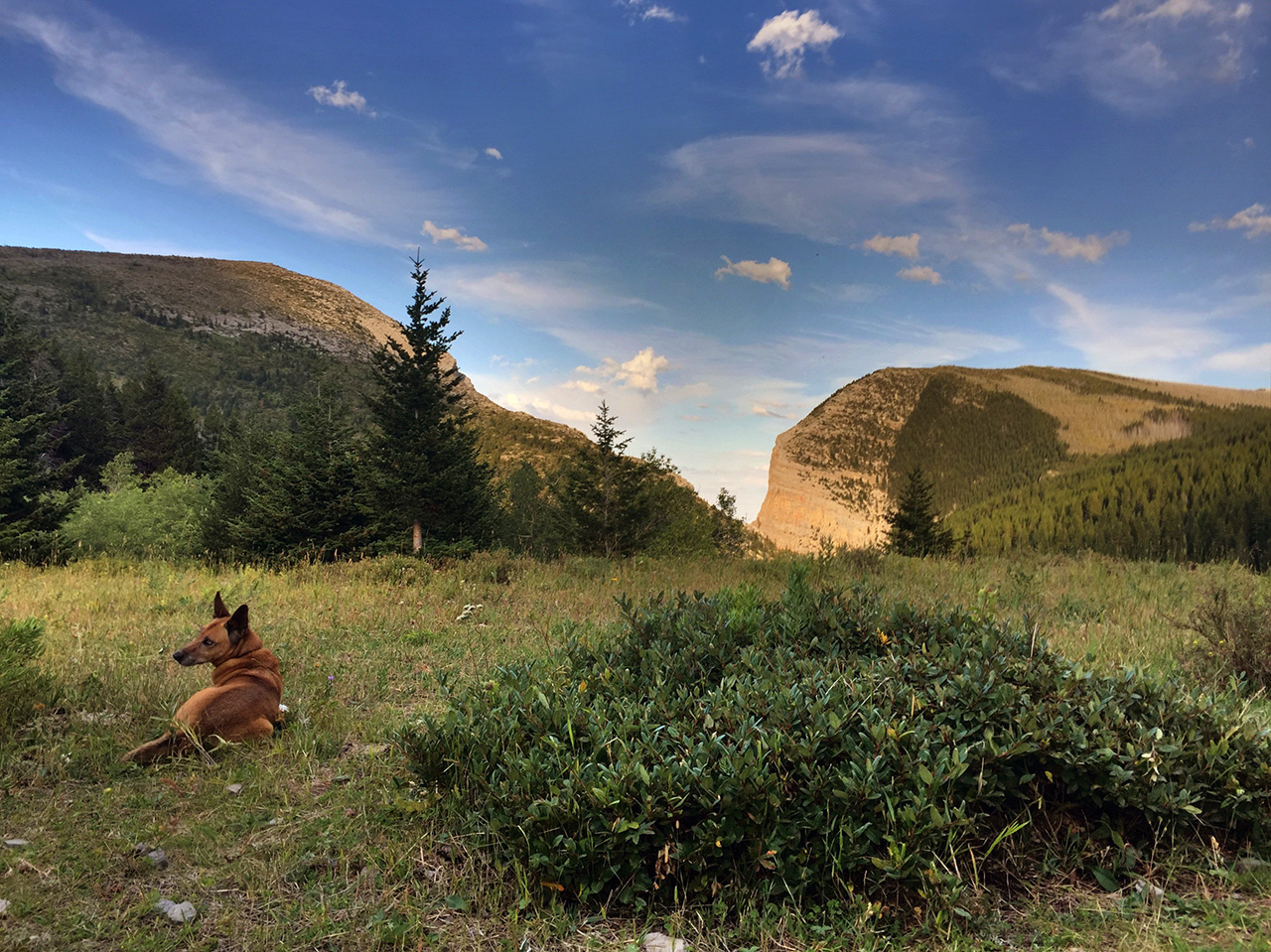
CAN you bring your dog to wilderness?
Generally speaking, in many Forest Service and Bureau of Land Management wilderness areas, dogs are welcome, as long as they are leashed or under voice control. Leashes must be no more than 6 feet in length. Popular areas, trails and destinations may be closed to dogs, or leashes may be required. Most National Park Service and Fish and Wildlife Service wilderness areas do not allow dogs. Where they are allowed, dogs must be leashed at all times. Prohibitions do not apply to service animals (dogs) accompanying a person with a disability. Emotional support or therapy dogs, or other animals, are not defined as service animals by the American's with Disabilities Act (ADA) and thus are prohibited in areas where dogs are not allowed. Before departing on your trip, be sure to check the agency regulations regarding dogs for the wilderness you want to visit.
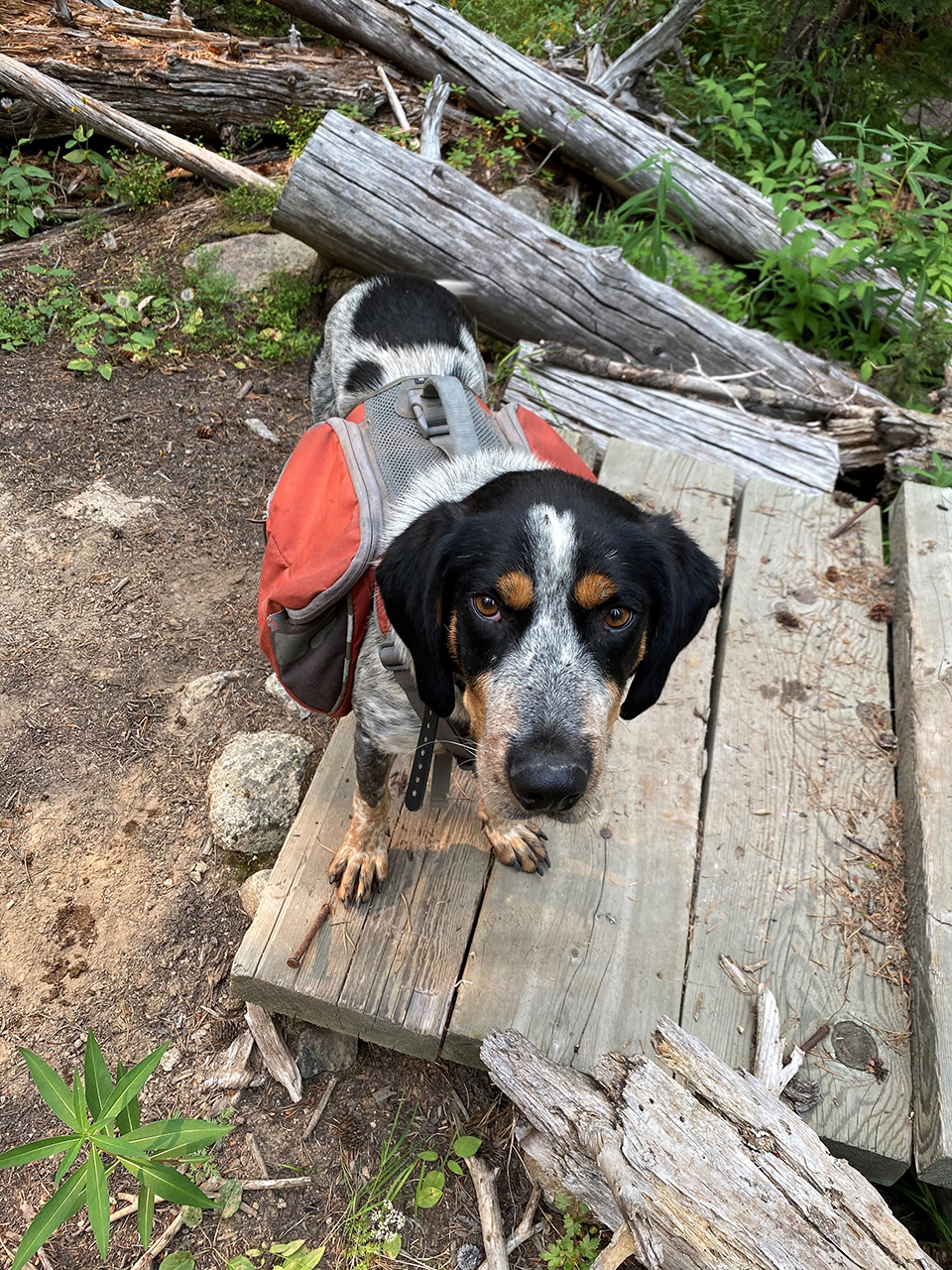
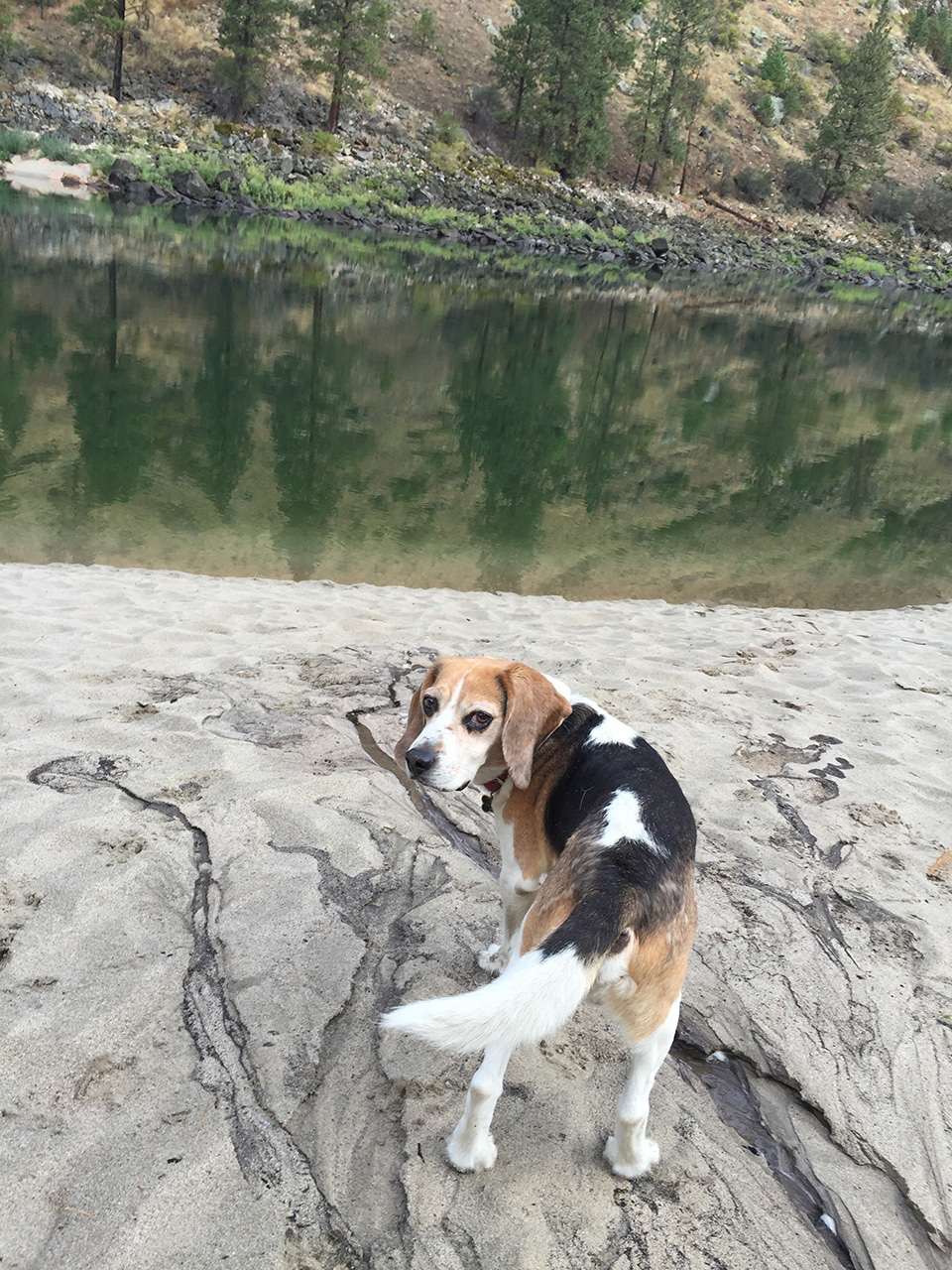
SHOULD you bring your dog to wilderness?
If regulations allow you to bring your dog along on your next wilderness adventure, consider whether you should.
Health and Fitness
Young, athletic pups with pre-trip conditioning will generally do well on wilderness trips. In contrast, puppies, elderly dogs, obese dogs, dogs with health conditions, and dogs who have not received adequate athletic training beforehand won't. Objectively assess your dog's age, stamina and overall health before thinking about a wilderness trip. Make sure your dog has up-to-date vaccinations, and consult your vet before bringing a dog with arthritis, any type of heart condition, diabetes or other major health conditions into the wilderness, since lengthy exercise and elevation gain can cause serious physical symptoms and even death. Invest in the same type of pre-training for your dog as you do for yourself to avoid foot pad injuries and exhaustion.
Duration, Difficulty and Terrain
Assess whether the duration and difficulty of your trip is reasonable for your dog, and whether the terrain presents hazards to your dog's life or health including:
- Rocky areas and scree slopes. Sharp rocks can abrade or cut a dog's paw pads.
- Bouldering or rock climbing, including canyons. Slots canyons, in particular, can require climbing. Your dog risks falling if trying to scale steep walls or walk along narrow ledges.
- Extensive blowdown--trees that have fallen over--or other obstacles that dogs must repeatedly jump over. Downed trees are common in burned areas and on infrequently maintained trails. Repeated jumping is very hard on a dog's shoulder joints.
- Swift water. Spring runoff is particularly dangerous. Dogs that like to swim, or even simply wade into fast moving water for a drink, can be swept downstream and drowned in strainers--piles of downed trees that wash into streambeds each spring when the water is higher. Log crossings over rivers and creeks can also be very slippery for dogs, especially when logs are narrow and wet.
- Exposed areas, such as ridgeline hikes. On hot summer day, traveling in areas without shade increases your dog's risk of dehydration and heat exhaustion.
Availability of Water
Dogs drink about one ounce of water per pound of body weight per day. This a general guideline, so be watchful and offer water often, especially on hot days. Since you must carry water for both you and your dog, consider leaving your dog at home if you are traveling for longer distances in an area without frequently available water.
Temperature and Season
While your husky might be truly content in winter, dogs with short legs and thin fur will struggle in cold conditions and deep snow. Frostbite, hypothermia, and poisoning from antifreeze or de-icer leaks in parking lots and at trailheads are all winter care and safety concerns for dogs. Conversely, black dogs, thick-bodied dogs and dogs with thick fur are more prone to heat exhaustion in hot temperatures. Dogs don't sweat like people do, and can overheat quickly. They pant to regulate body temperature, so closely monitor your dog in hot conditions for excessive panting, weakness, discomfort, and other signs of stress. Consider leaving your dog at home if you plan to travel in areas with extreme temperatures, or take pre-cautions to warm (ex. coat and booties, extra calories) or cool (ex. cooling collar, frequent breaks, swimming) your dog. When recreating in wilderness during hunting season (this varies by state), put an orange vest on your dog, as they can easily be mistaken for coyotes or other small game.
Wildlife
A dog's natural instinct is to bark at and chase anything that runs. Dogs that chase deer and other wildlife can kill, injure or exhaust these animal for whom wilderness is home. Conversely, if cornered, bears, porcupines, raccoons, wolverines and other predators can kill or severely injure your dog. If your dog has a strong prey, leave your dog at home or leash your dog when near wildlife. If your dog barks constantly, leave your dog at home so you don't disrupt wildlife and other visitors. In bear and mountain lion country, keep your dog close to you at all times. Do not allow your dog to be unleashed out in front of you, as it could bring a bear or lion back to you. Keep your dog in your tent or leashed very near you at night. Predators, such as coyote packs, can kill even large dogs by luring a free-roaming dog away from camp.
Dog Encounter Etiquette
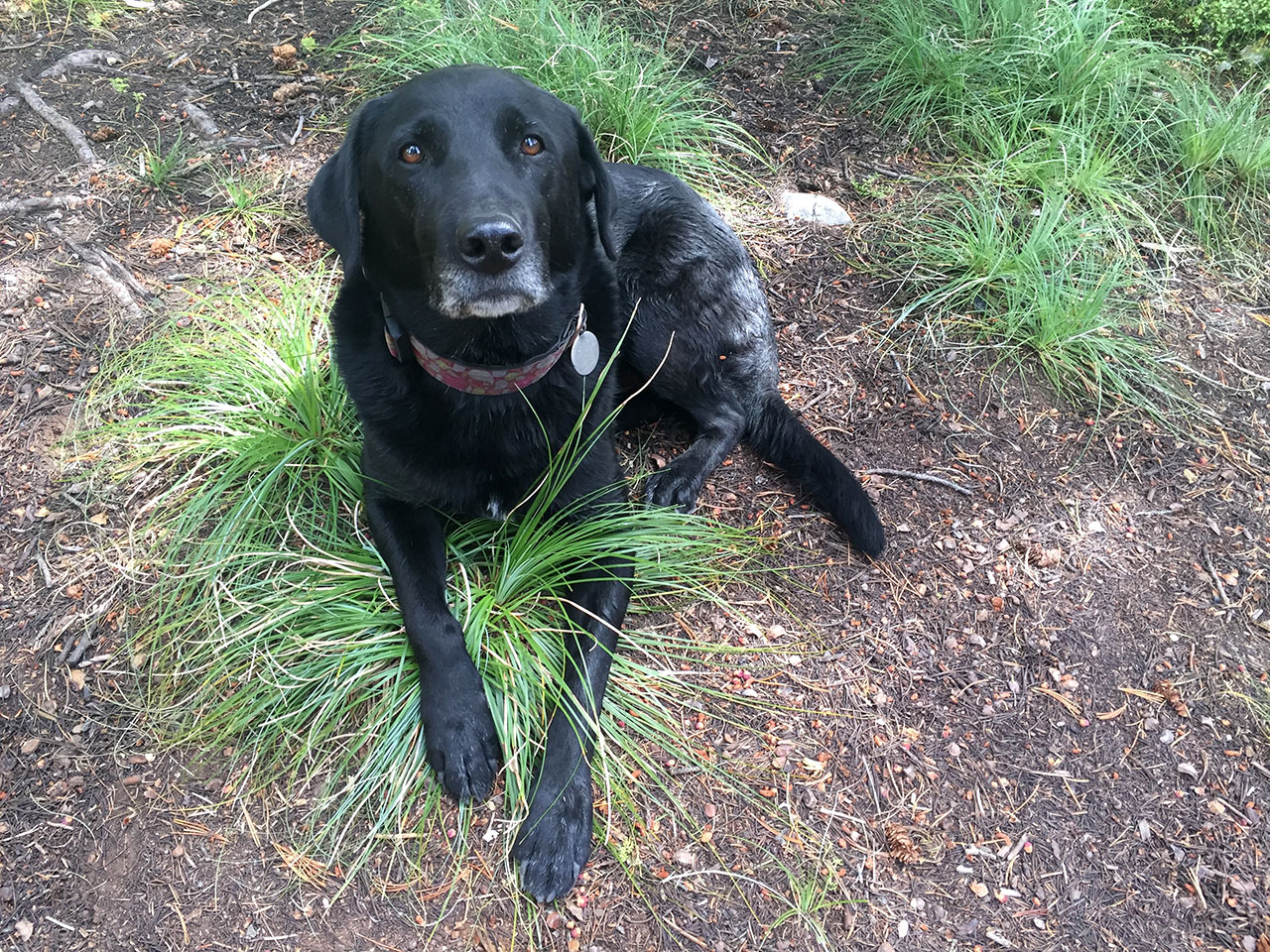
Although you may be a dog-loving person, not everyone is comfortable with being approached by dogs on the trail. While some people are mildly uncomfortable or annoyed by dogs, people who have been bitten or had tramatic incidents with dogs can experience extreme fear and panic attacks. Do not let your dog run up to other hikers. And be aware that your dog can act and react very differently in new surroundings and around unfamiliar people, children, and other dogs. Even if another hiker tells you that their dog is friendly, never stick your hand down to pet a dog you don't know. Animal bites often result in serious localized or systemic infections, which are quick to develop--sometimes in hours--and can be deadly in the backcountry where treatment options are limited.
To leash or not to leash?
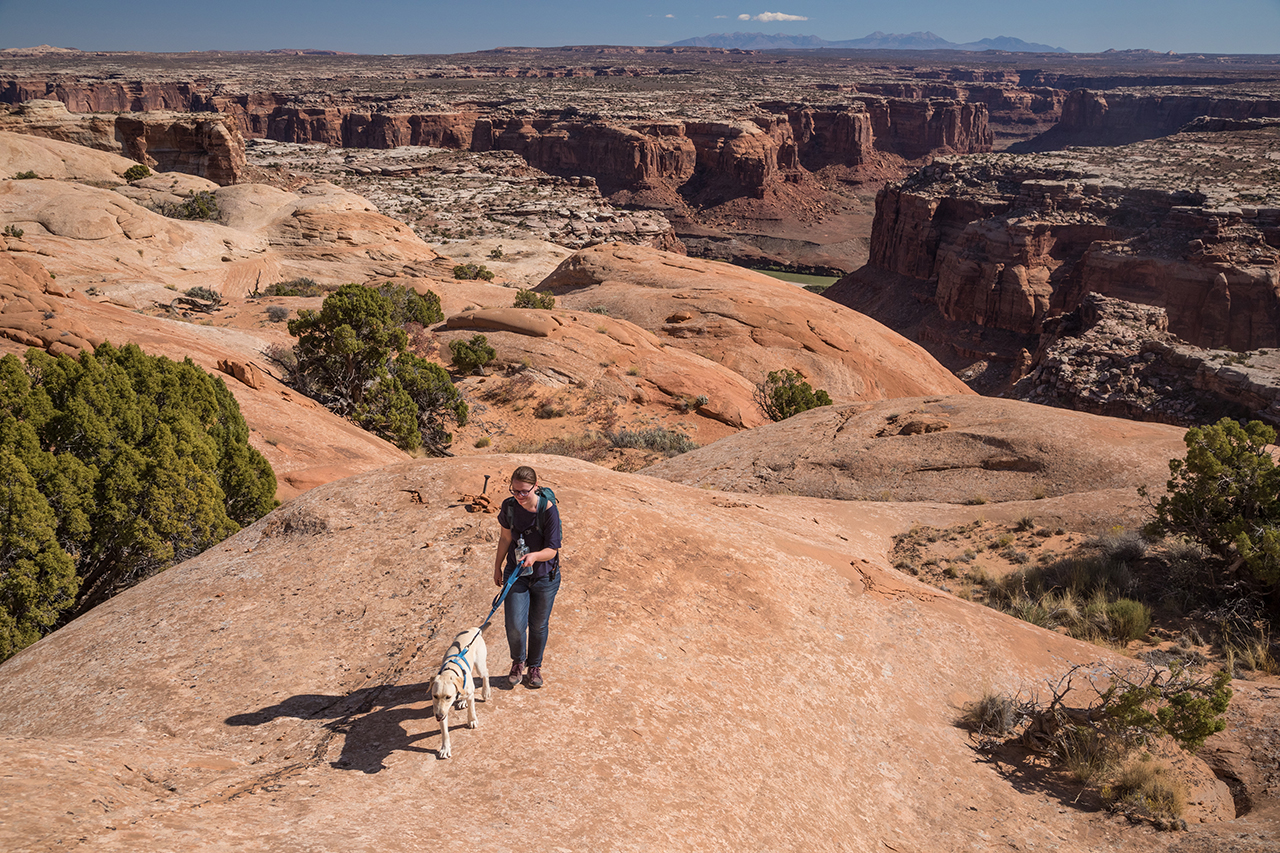
What is "Voice Control"?
In areas where leashing your dog is not mandatory, all dogs are still required to be under voice control. What does this mean? The most important command your dog must follow in the wilderness is the recall command. Whether you use the word "come", "here", or something else, your dog should IMMEDIATELY return to your side, even if distractions are present. Strong recall ensures that your dog will not chase deer and other wildlife, run up to and intimidate other visitors, frighten packstock and horses or eat something poisonous. Recall training takes time and practice, so begin working with your dog well in advance of your wilderness trip.
Overall, you should leash your dog when it's required AND:
- If your dog does not have flawless recall.
- If your dog is a wanderer. Lost dogs can be very difficult to find in the wilderness, so prevent your dog from becoming lost in the first place.
- When meeting or passing other visitors on a trail. This is especially important if they have dogs and/or children with them.
- When meeting or passing pack strings on a trail. Move well off the trail (to the downhill side if possible) and start talking in a calm voice to the riders and horses BEFORE they reach you. Stay still and avoid spooking stock.
- When camping near other visitors or near stock.
- At destinations where other visitors are present.
- Around wildlife.
- During storms, especially if your dog is afraid of thunder. Scared dogs tend to run and can easily become lost.
Dog Poop: Carry it or bury it?
On day hikes, you should plan to pack out your dog poop, just as you would other garbage, and dispose of it in trailhead trash cans or at home. Do not be tempted to leave used bags on the side of the trail and pick them up later. Pack out used dog poop bags in your dog's pack or make your own DIY storage container like the above video on the right shows (at the end). On overnight trips, bury your dog's poop in a cathole, just like you would your own.
What dog-related gear do I need?
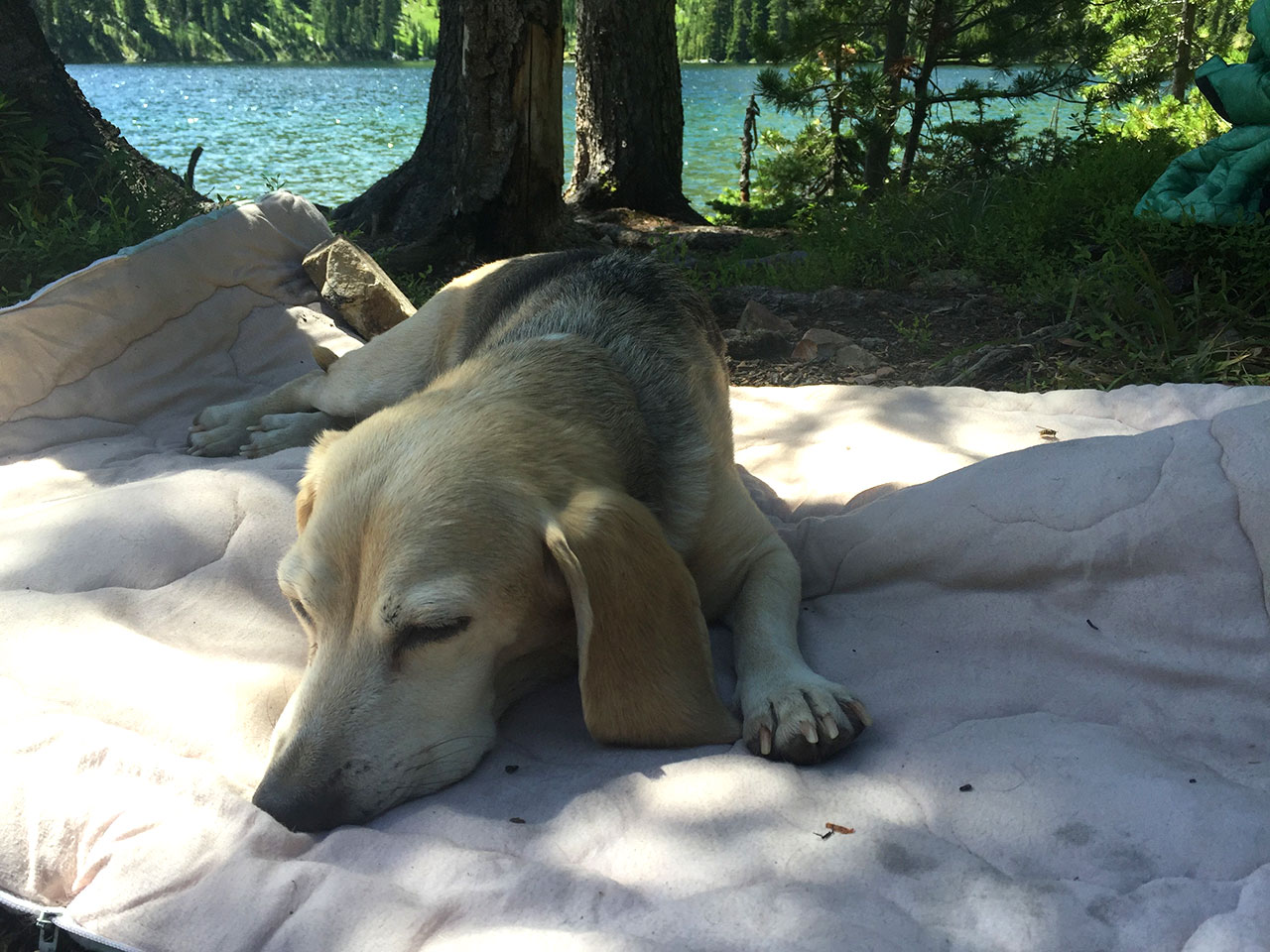
Dogs generally need many of the same things you do. Dog gear can include:
Dog Pack: Make sure your dog's pack fits snuggly. Train your dog to wear the pack at home without weight. In general, dogs should carry no more than 20% of their weight, and you should distribute weight evenly on both sides of the pack. Often, it's convenient for your dog to carry its food, treats, bowl and leash.
Coat: For winter wilderness travel, consider purchasing a coat for a dog with thinner fur.
Leash, Collar, Harness and ID Tags: Pack a durable leash no longer than 6 feet in length, and make sure your dog has a collar with current identification tags that include your contact information. Consider micro-chipping your dog as a secondary form of ID. Putting a harness on your dogs, in addition to or instead of a collar, also adds a measure of security and control.
Poop Bags: Carry 4-6 bags during any day hike to ensure you have enough to double-bag, if needed.
Bedding: A foam pad, small blanket, child's down comforter, child's sleeping bag--all of these options, and others, can work to keep your dog comfortable and warm at night. Depending on the size if your dog, you may also need a larger tent.
Extra Food and Medication: Just like you do, dogs need extra calories when exerting more energy. Bring 1/4- to 1/2-again as much food for you dog as you feed it at home, depending on the difficulty and duration of your trip. High value, light weight snacks, such as chicken jerky, can cut down on weight during lengthy trips. If your dog requires medication, make sure to pack enough for your trip and administer it as you would at home.
First Aid: Many of the same items in a standard for-humans first aid kit will work for dogs too. Ask your vet for tips on what to bring - like vet wrap. Depending on the duration and remoteness of your trip, consider adding other items from the ultimate dog first aid kit.
REI, the Outbound Collective, RuffWear, and CampCooks offer other great tips on taking your dog into the wilderness. Pupspal also has good infographics on hiking with dogs and winter safety.